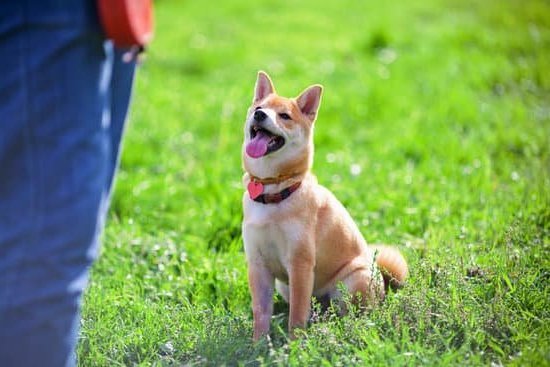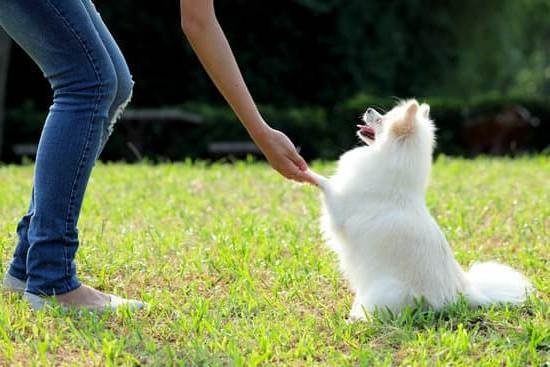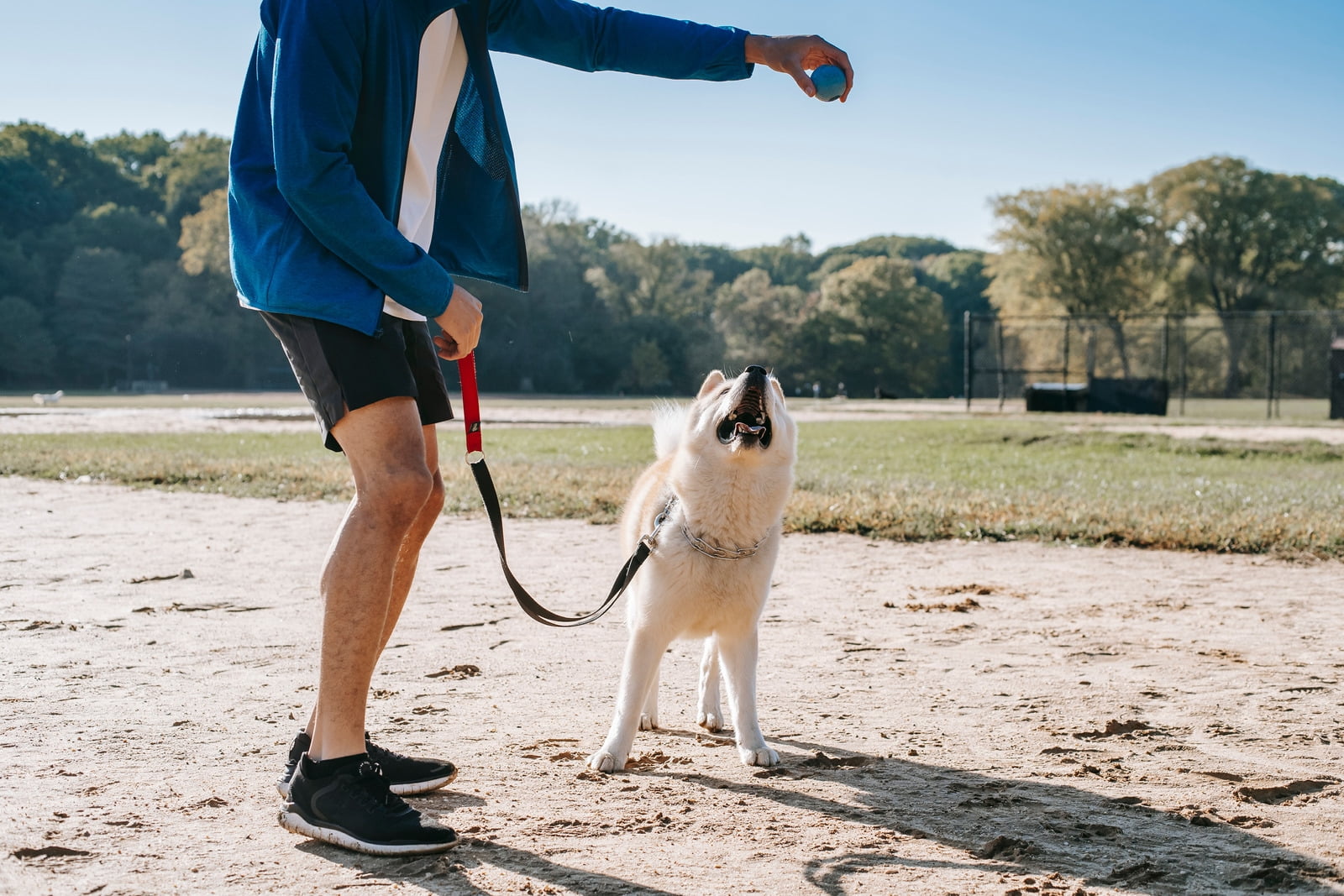Training a 3-year-old dog may initially seem like a daunting task, but with the right approach and mindset, it is indeed possible to teach an older dog new tricks. In this introductory section, we will delve into the feasibility of training a 3-year-old dog, debunking common misconceptions and emphasizing the importance of patience and consistency in the training process.
One prevalent misconception about older dogs is that they are set in their ways and cannot be trained effectively. However, this belief overlooks the fact that dogs possess an innate desire to learn and please their owners throughout their lives. While puppies may be more receptive to learning due to their youthfulness, adult dogs can still acquire new skills with proper guidance and dedicated training.
Patience and consistency are key elements when it comes to training a 3-year-old dog. Unlike puppies who have more energy and seemingly limitless attention spans, older dogs may require extra time to understand and adopt new commands or behaviors. By keeping your expectations realistic and providing consistent reinforcement through positive rewards, you can effectively teach your 3-year-old dog various skills while cultivating a strong bond between you both.
In the following sections of this article, we will explore different aspects of training a 3-year-old dog, ranging from assessing your dog’s personality traits to addressing behavioral issues and introducing socialization opportunities. With the right strategies and commitment, you can unlock your dog’s potential for growth and development at any age. Let’s embark on this rewarding journey together.
Assessing the Dog’s Personality and Temperament
Understanding your dog’s personality and temperament is crucial when training a 3-year-old dog. Every dog is unique, with their own set of traits and behaviors. By understanding your dog’s individual characteristics, you can tailor your training methods to suit their needs and enhance the training process.
One way to assess your dog’s personality is by observing their behavior in various situations. Take note of how they react to new people, other animals, or different environments. This can provide insights into whether your dog is naturally shy, outgoing, fearful, or confident. Understanding these tendencies will help you address any specific challenges that may arise during training.
Another methodology for identifying your dog’s personality type is through the use of temperament tests. These tests often involve exposing your dog to different stimuli and observing their responses. They can provide valuable information about your dog’s sociability, trainability, fearfulness, and aggression levels.
Once you have a clear understanding of your dog’s personality and temperament, you can tailor your training methods accordingly. For example, if you have a shy or fearful dog, it may be necessary to focus on building their confidence through positive reinforcement techniques. On the other hand, a highly energetic and outgoing dog may require more mental stimulation during training sessions.
To sum up:
- Observe your dog in different situations to understand their behavior.
- Consider using temperament tests to gain insight into their sociability and trainability.
- Tailor your training methods based on your dog’s personality and temperament.
By taking the time to assess and understand your 3-year-old dog’s personality and temperament, you can develop a training plan that works best for them. This personalized approach will allow you to overcome potential challenges more effectively and create a stronger bond with your furry friend throughout the training process.
Recognizing the Challenges of Training an Older Dog
Training a 3-year-old dog can present its own unique set of challenges. While it is certainly possible to train an older dog, it is crucial to understand and address these challenges in order to have a successful training experience. By recognizing the specific obstacles that may arise when training an older dog, you can develop strategies to overcome them effectively.
Addressing Established Habits and Past Experiences
One of the main challenges in training an older dog is breaking established habits. Dogs, like humans, become creatures of habit over time. They may have developed certain behaviors or routines that are deeply ingrained. This can make it more difficult to introduce new commands or modify existing behaviors.
To overcome this challenge, it is important to approach training with patience and consistency. Be prepared for resistance and setbacks as your dog adjusts to new expectations. Offer plenty of positive reinforcement and rewards when your dog displays desired behaviors, as this will encourage them to continue practicing those behaviors.
Overcoming Possible Resistance
Another challenge when training an older dog is the potential resistance they may exhibit. Older dogs may be less responsive or more set in their ways compared to younger dogs, which can make the training process more challenging.
To overcome resistance, it is important to use positive reinforcement techniques consistently. Reward your dog with treats, praise, and affection whenever they display desired behaviors. Consistency in both your commands and rewards will help establish a clear understanding for your 3-year-old dog.
Adapting Training Methods
Training methods that work well for young puppies may not necessarily be effective for older dogs. It is essential to adapt your training techniques based on the age and individual characteristics of your 3-year-old dog.
Consider using gentle training methods that focus on positive reinforcement rather than punishment or negative reinforcement. Reinforce desired behaviors through rewards and redirect undesirable behaviors rather than scolding or punishing your dog. By using training methods that suit your dog’s age and personality, you can ensure a more successful and enjoyable training experience.
Overall, recognizing the challenges of training an older dog is crucial for developing effective strategies. With patience, consistency, and adaptable training techniques, it is possible to train and modify behaviors in a 3-year-old dog. By navigating these challenges successfully, you can create a strong bond with your furry companion and unleash their full potential.
Establishing a Training Routine
One of the key factors in successfully training a 3-year-old dog is establishing a consistent training routine. Dogs thrive on structure and predictability, so having a set schedule for training sessions can greatly enhance their learning process. A routine provides clarity and helps the dog understand what is expected of them during training sessions.
To establish a training routine for your 3-year-old dog, it is important to first determine the best time for training. Consider your dog’s energy levels and choose a time when they are calm and focused, such as after they have had some exercise or a meal. This will make them more receptive to learning and less likely to get distracted.
When creating your training routine, start with short sessions, around 10-15 minutes each, multiple times throughout the day. This allows for frequent reinforcement of commands and prevents your dog from getting bored or overwhelmed. Gradually increase the duration of the sessions as your dog becomes more comfortable and attentive.
In addition to scheduling regular training sessions, it is also beneficial to incorporate training into everyday activities. For example, you can ask your dog to sit before putting their food bowl down or wait patiently before going outside. These small moments of training reinforce good behavior and help your 3-year-old dog understand that training is an ongoing part of their daily life.
Consistency is key when establishing a training routine. Use the same verbal cues and hand signals consistently, so that your dog can easily associate them with specific actions or commands. Consistency also applies to rewards and consequences: always reward desired behaviors with treats or praise, while redirecting or ignoring undesired behaviors.
By establishing a structured training routine for your 3-year-old dog, you can create an environment that promotes effective learning and reinforces positive behaviors. Just remember to be patient and consistent throughout the process, as successful training takes time and dedication.
Basic Obedience Training for Older Dogs
Basic obedience training is essential for any dog, regardless of their age. While it may require some additional patience and time, it is definitely possible to train a 3-year-old dog in basic obedience commands. In this section, we will discuss the essential obedience commands suitable for a 3-year-old dog and provide a step-by-step guide on how to train your furry friend to follow these commands.
The first and most important command to teach your 3-year-old dog is “sit.” This command is the foundation for many other commands and behaviors. Start by holding a treat close to your dog’s nose and then slowly move it upwards, causing their head to tilt back and their bottom to lower into a sitting position.
Once your dog is sitting, praise them enthusiastically and give them the treat as a reward. Repeat this process multiple times until your dog understands the command.
Another crucial command to teach your older dog is “stay.” Begin by having your dog sit or lie down, then give the verbal cue “stay” while extending your open palm towards them like a stop sign. Take a step backward but stay close enough that you can quickly reinforce the stay command if needed.
Return immediately to where you started, praise your dog, and offer them a treat if they remain in place. Gradually increase the distance and duration of the stay over time.
“Come” is an important command that ensures safety in various situations. To teach your 3-year-old dog this command, start in a distraction-free environment and call their name followed by the word “come” in an enthusiastic tone. As they start moving toward you, encourage them with praise or treats. When they reach you, offer plenty of positive reinforcement. Practice this command frequently in different environments with increasing distractions.
Remember, training sessions should be short but frequent to prevent boredom or frustration from both you and your furry friend. Always use positive reinforcement techniques such as treats, praise, and petting to encourage your dog’s progress. Keep in mind that every dog is unique and learns at their own pace, so be patient and consistent with your training efforts.
By effectively teaching basic obedience commands to your 3-year-old dog, you are not only instilling good behavior but also strengthening the bond between you and your pet. Training provides mental stimulation, improves communication, and ultimately leads to a happier and more well-behaved dog. So grab some treats, set aside a few minutes each day, and enjoy the journey of training your older dog.
Addressing Behavioral Issues in Older Dogs
One of the challenges that may arise when training a 3-year-old dog is dealing with behavioral issues. Whether these issues have developed over time or were present from a young age, it’s important to address them in order to have a well-behaved and happy dog. Understanding and correcting these behavioral issues requires patience, consistency, and the application of appropriate training methods.
Common behavioral problems in older dogs include aggression, fearfulness, separation anxiety, and excessive barking. It is crucial to identify the underlying causes of these behaviors before implementing any training techniques. Consulting with a professional dog trainer or behaviorist can provide valuable insights into the specific reasons behind your dog’s behaviors and help you develop a tailored plan to address them.
When addressing behavioral issues in older dogs, positive reinforcement is often the most effective training approach. This involves rewarding your dog for exhibiting desired behaviors rather than punishing them for undesirable ones. By using treats, praise, and other rewards like playtime or affection, you can motivate your dog to engage in positive behaviors and discourage unwanted ones.
In some cases, desensitization and counterconditioning techniques may also be necessary. These methods involve gradually exposing your dog to stimuli that trigger their negative behavior while providing positive associations at the same time. For example, if your dog exhibits fear aggression towards strangers on walks, slowly introducing them to new people in a controlled environment while rewarding calm behavior can help them overcome their fear.
Consistency is key when addressing behavioral issues in older dogs. It’s important to establish clear boundaries and rules for your dog while staying committed to enforcing them consistently across all situations. This will help prevent confusion and reinforce desirable behaviors over time.
By addressing behavioral issues head-on with patience, consistency, appropriate training methods, and possibly professional guidance when needed, it is indeed possible to overcome these challenges with an older dog. With time and effort invested into training, you can help your 3-year-old dog become a well-mannered and contented member of your family.
Socialization for Older Dogs
Socialization is a crucial aspect of training for dogs of any age, including older dogs. It plays a significant role in helping them become well-adjusted and confident in various situations and environments. While socializing a younger puppy may seem more intuitive, it is equally important to expose and acclimate your 3-year-old dog to new experiences and interactions. By doing so, you can help them become more adaptable and reduce the likelihood of behavioral issues in the future.
To successfully socialize your 3-year-old dog, there are several techniques you can employ. One effective method is gradual exposure. Start by introducing your dog to new people or animals in a controlled and calm setting. In these initial interactions, observe your dog’s body language and ensure they feel comfortable before proceeding further. As they start to adapt, gradually increase the level of stimuli or complexity of interactions.
Another important aspect of socialization is exposing your older dog to various environments. Take them on regular walks in different neighborhoods, visit parks or pet-friendly locations, or even enroll them in group training classes where they can interact with other dogs and their owners. These experiences will help your dog gain confidence in different scenarios and learn appropriate behavior around unfamiliar people and animals.
During the socialization process, it’s crucial to remain patient and positive. Remember that each dog has their own pace of adaptation, so don’t rush or overwhelm them with too much stimuli at once. Use treats, praise, and rewards to reinforce positive behavior during socialization encounters. This will create positive associations with new experiences and motivate your dog to continue learning.
Advanced Training Opportunities for Older Dogs
Exploring Advanced Training Techniques
Once your 3-year-old dog has mastered the basics of obedience training, you may be looking for ways to challenge and continue their learning journey. Advanced training techniques can help stimulate your dog mentally and physically, providing them with new skills and strengthening their existing abilities. Here are some advanced training opportunities that you can consider for your older dog.
Agility Training
Agility training is a popular option for owners of older dogs who want to incorporate exercise, mental stimulation, and teamwork into their routine. In agility training, dogs navigate obstacle courses, including jumps, tunnels, weave poles, and contact obstacles such as A-frames or dog walks. This activity not only enhances your dog’s physical fitness but also improves their agility, balance, and coordination.
Trick Training
Trick training is an entertaining way to engage your 3-year-old dog’s mind while strengthening the bond between you two. Teach your dog a variety of fun tricks such as rollover, play dead, shake hands, or even fetch specific objects by name. With time and practice, you can build an impressive repertoire of tricks that will not only impress others but also keep your dog mentally stimulated.
Canine Sports
If you’re looking for more structured activities with clear goals and competitions in mind, consider participating in canine sports with your older dog. Sports like obedience trials, rally obedience, flyball, freestyle dancing, dock diving, or scent work provide opportunities for both mental stimulation and physical exercise. These sports encourage teamwork between you and your dog while offering a chance to showcase their skills in various areas.
By exploring these advanced training opportunities or seeking out specialized programs designed for older dogs in specific areas of interest (such as therapy work or search-and-rescue), you can tap into the full potential of your 3-year-old canine companion.
Remember to always approach advanced training with patience, introducing new challenges gradually, and ensuring that your dog enjoys the process. Keep in mind that every dog is different, and some may excel in certain activities while showing less interest in others.
Be flexible and adapt to your dog’s preferences and abilities to create a rewarding and enjoyable training experience for both of you. With determination, consistency, and a sense of fun, you can continue fostering growth and deepening the bond with your older dog through advanced training opportunities.
Patience and Perseverance
Training a 3-year-old dog requires patience and perseverance. While it may be tempting to think that older dogs are set in their ways and cannot be trained, this is a common misconception. With the right approach and understanding, you can successfully train your dog at any age.
When embarking on training your 3-year-old dog, it’s important to remember that every dog has a unique personality and temperament. Take the time to understand your dog’s individual traits and behavior patterns. This will help you tailor your training methods to best suit their needs.
Recognizing the challenges that come with training an older dog is crucial. Older dogs may have established habits or past experiences that can make training more difficult. However, with patience and consistency, you can overcome these challenges effectively. It’s important not to get discouraged if progress seems slow at times – stay dedicated to the process and celebrate small victories along the way.
Establishing a training routine is essential when working with a 3-year-old dog. Dogs thrive on structure and routine, so creating a regular schedule for training sessions will help them understand what is expected of them. Make sure to set aside dedicated time each day for training exercises, as well as incorporating reinforcement throughout their daily life by using consistent cues and commands.
Remember that basic obedience training is still important for older dogs. Begin with foundational commands such as sit, stay, come, and heel. Break down each command into small steps and use positive reinforcement techniques such as treats or praise to reward good behavior. Be patient during this process and maintain consistency in your expectations.
Finally, nurturing the training process requires patience, consistency, and positive reinforcement. Avoid punishment-based techniques as they can create fear or anxiety in your dog which hinders their ability to learn. Instead, focus on rewarding desired behaviors and providing clear communication through cues and commands.
By embracing patience and perseverance in the training process, you can unleash the potential of your 3-year-old dog and create a strong bond based on trust and understanding.
Conclusion
In conclusion, training a 3-year-old dog is entirely feasible, despite common misconceptions about the difficulty of training older dogs. With patience and consistency, any dog can learn new commands and behaviors. The key to successful training lies in understanding your dog’s individual personality and temperament, as well as recognizing the challenges that may arise due to established habits and past experiences.
By establishing a structured training routine and employing positive reinforcement techniques, you can effectively train your 3-year-old dog in basic obedience commands. It is also essential to address any behavioral issues that may arise through consistent training and correction strategies. Socialization is another crucial aspect of training for older dogs, allowing them to experience new environments and interactions.
For those looking to further challenge their 3-year-old dog’s skills, advanced training opportunities such as specialized programs or activities can be explored. However, throughout the entire training process, it is important to remember that patience and perseverance are key. Embracing the journey of training your older dog will not only lead to a well-behaved companion but also strengthen the bond between you and your furry friend.
So don’t let age deter you from unleashing the potential of your 3-year-old dog. With dedication and commitment, you can nurture their abilities and create a harmonious relationship based on trust and mutual understanding. Start your training journey today and watch as your beloved furry friend grows into their fullest potential.
Frequently Asked Questions
Is it too late to train a 3 year old dog?
It is definitely not too late to train a 3 year old dog. While it may be easier to train dogs at a younger age, adult dogs can still learn new behaviors and commands.
The key lies in patience, consistency, and positive reinforcement. By using rewards-based training methods such as treats or praise, combined with clear communication and repetition, a 3 year old dog can be successfully trained.
How long does it take to train a 3 year old dog?
The duration required to train a 3 year old dog can vary depending on several factors. These factors include the individual dog’s temperament, previous training experiences, and the specific behaviors that need to be addressed.
Generally, older dogs require more time and patience compared to puppies as they may have established habits that need to be modified or corrected. It is important for owners to set realistic expectations and understand that consistent training efforts over an extended period of time will yield the best results.
How do you discipline a 3 year old dog?
Discipline should always be approached in a positive and constructive manner when dealing with a 3 year old dog. Instead of harsh punishment or physical correction, it is recommended to focus on positive reinforcement techniques for desirable behaviors rather than punishment for unwanted behaviors. Consistency is key when disciplining a dog of any age.
Repeating commands firmly but calmly along with redirecting the behavior can help establish boundaries while maintaining trust between the owner and the dog. Additionally, rewards such as treats or verbal praise for correct responses can go a long way in reinforcing desired behavior and discouraging unwanted actions.

Welcome to the blog! I am a professional dog trainer and have been working with dogs for many years. In this blog, I will be discussing various topics related to dog training, including tips, tricks, and advice. I hope you find this information helpful and informative. Thanks for reading!





